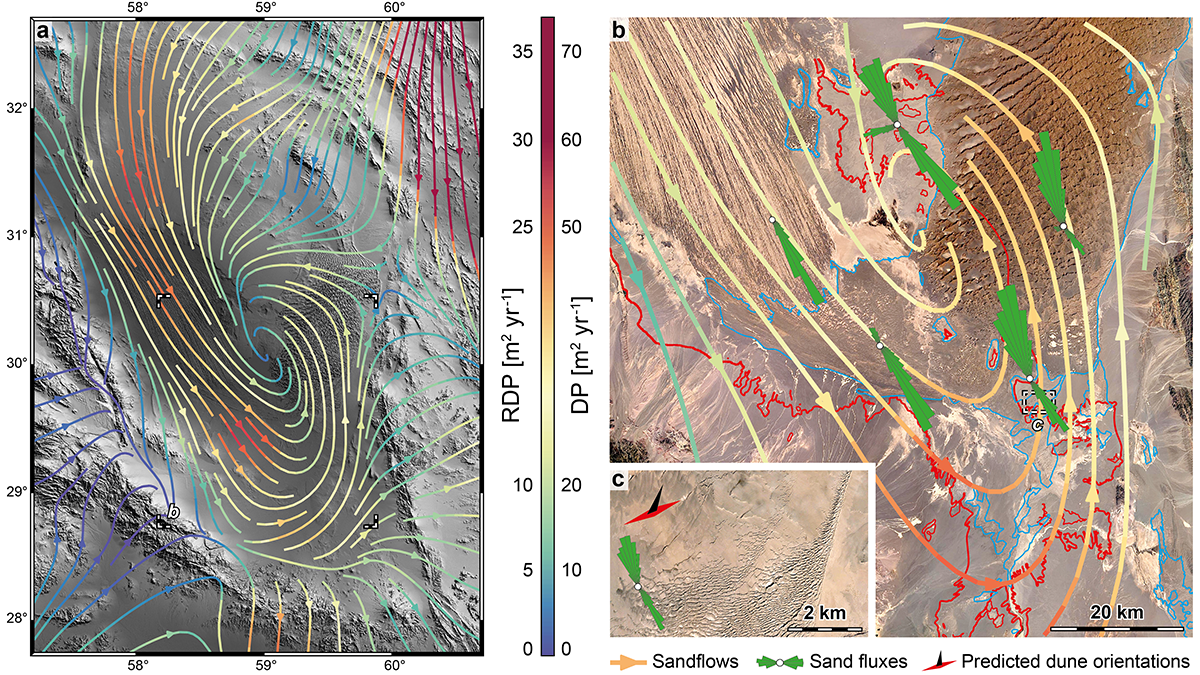Editors’ Highlights are summaries of recent papers by AGU’s journal editors.
Source: Geophysical Research Letters
It is extremely difficult to quantify the amount of sediment transported across landscapes or emitted into the atmosphere due the force exerted by wind on the ground. This is because these sediment fluxes are not associated with a well-identified spatial network that would permit direct linking of sediment production areas to their areas of accumulation. The Lut Desert in Iran is an exceptional natural laboratory to study wind-driven sediment flows because it is a closed water drainage system, such that sediment can only be evacuated from the basin by wind processes.
Through a remarkable synthesis of new remote sensing imagery and dating techniques, combined with modern data products on wind fields, Chanteloube et al. [2022] investigate erosion and deposition of sand in the Lut Desert to map and quantify sandflows and budgets at different time scales. Their findings indicate temporal persistence of mean fluxes from decades to millions of years, suggesting a stability of wind regimes and transport characteristics. These insights can help analyze the past evolution of surficial features on planets dominated by wind processes, such as Mars or Titan.
Citation: Chanteloube, C., Barrier, L., Derakhshani, R., Gadal, C., Braucher, R., Payet, V., et al. (2022). Source-to-sink aeolian fluxes from arid landscape dynamics in the Lut Desert. Geophysical Research Letters, 49, e2021GL097342. https://doi.org/10.1029/2021GL097342
—Valeriy Ivanov, Editor, Geophysical Research Letters

